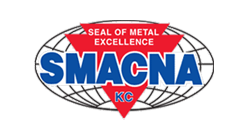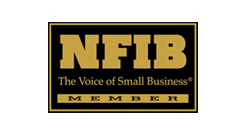Maintenance
Cleaning your stainless steel everyday can help with stubborn stains. Follow the guidelines below to keep your stainless steel in mint condition for years to come.
How do I take care of Anodized Aluminum?
Aluminum Cleaning and Maintenance Guide.
What should I use to clean stainless steel?
- DO USE appropriate cleaner for stainless steel such as alkaline, alkaline chlorinated, or non-chloride containing cleaners. Gentle detergents, such as dish soap, work best. After cleaning, rinse immediately.
- DO NOT USE cleaners with chlorides and products containing quaternary salts since these can also attack stainless steel and cause pitting and rusting.
Examples: Chlorine Bleach, Comet, Ajax, tile cleaner, or all-purpose cleaners. These cleaners can create discoloration and damage the top layer of the material and leave steaks. - If you do use chlorinated cleaners, you must rinse and wipe the surface down immediately.
- DO NOT USE HYDROCHLORIC ACID ON STAINLESS STEEL.
What type of cloth or sponge should I use on stainless steel?
- Use soft materials, such as microfiber towels, or paper towels.
What is the right cleaning procedure for stainless steel?
- Always try to wipe the direction of the natural grain. This can help clean any microscopic grooves where dust and dirt may get trapped.
- After wiping, don’t let your stainless steel sit in water or cleansers. The faster you eliminate still water and cleaning agents, the better!
How do I dry stainless steel?
- After cleaning, use a dry cloth to wipe down stainless steel to prevent residue, spotting, or streaking.
- Always air-dry your equipment once it has been wiped down. Oxygen helps keep the stainless steel passively firm.
I have a stainless steel sink. How does water affect stainless steel?
- The minerals in hard water can leave unattractive blemishes on stainless steel.
- Use a water softener to prevent these stains. Regularly check your water filters to keep distasteful and corrosive elements from going into the water and tarnishing your stainless steel.
Be aware of these potential ways to harm your stainless steel:
Make sure that you keep some cleaners and certain items away from stainless steel.
- Mechanical Abrasion (Contact with metal materials) – such as scouring pads, brushes, knives, forks, or any metal objects that can cause scratches or damage to stainless steel.
- Water or liquids with high iron contents – Still water or any water that can be trapped between objects such as rubber mats, cleaners and bottles. Continuous running water, soaps, or cleaners can also damage your stainless steel surfaces.
- Chloride and hydrochloric acid – Such as bleach, table salt, water, household cleaner and industrial cleaners.
| Application | Cleaning Agent | Instructions |
| Routine Maintenance | Mild detergent and water (warm) | Use sponge, rinse with clean water, wipe and dry. Follow grain direction. |
| Smears & Fingerprints | Sheila Shine, Arcal 20, Lac-O-Nu Eco Shine | Provides barrier film. Follow grain direction. |
| Hard Stains & Discoloration | Cameo, Talc, Zud | Rub in direction of grain |
| Grease & Burnt-on or baked-on foods | Easy Off, De-Grease-It, Oven Aid or any good commercial detergent | Apply with sponge or soft cloth. Rub in direction of grain |








